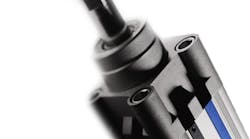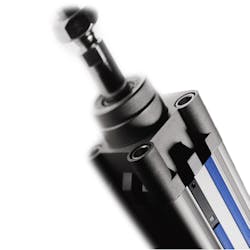Simrit, Elgin, Ill., the industrial sealing division of Freudenberg-NOK Sealing Technologies, has developed three new piston seals that reduce friction and lower energy consumption in pneumatic cylinders and other applications.
Simrit’s Low Friction Piston Seal TR 200 uses a sealing geometry for the smooth operation of pneumatic cylinders with higher efficienc
Another recent development from Simrit combines the advantages of elastomer and PTFE materials to produce two low-energy seals with low initial friction, non-linear behavior, and low hysteresis. The TCS is a bonded piston specifically developed for reciprocating motion. It combines the low friction characteristics of PTFE with the rigidity, centering, and lip shape (similar to that of a channel gasket) of a bonded transmission piston seal with the metal carrier that was previously used. The TCS tolerates high temperatures, involves mounting of a single part, has an integral piston, and offers excellent centering.
The third is Simrit’s TCS, a general-purpose piston groove seal offering low coefficient of friction and high heat tolerance. It features dual layers, including PTFE foil enhancement. Developed for use as a D-ring in a wide range of designs and diameters, the seal does not twist, resists extrusion and is easy to install.
For more information on any of Simrit’s TR 200 piston seal, or other sealing solutions, visit www.simrit.com.


